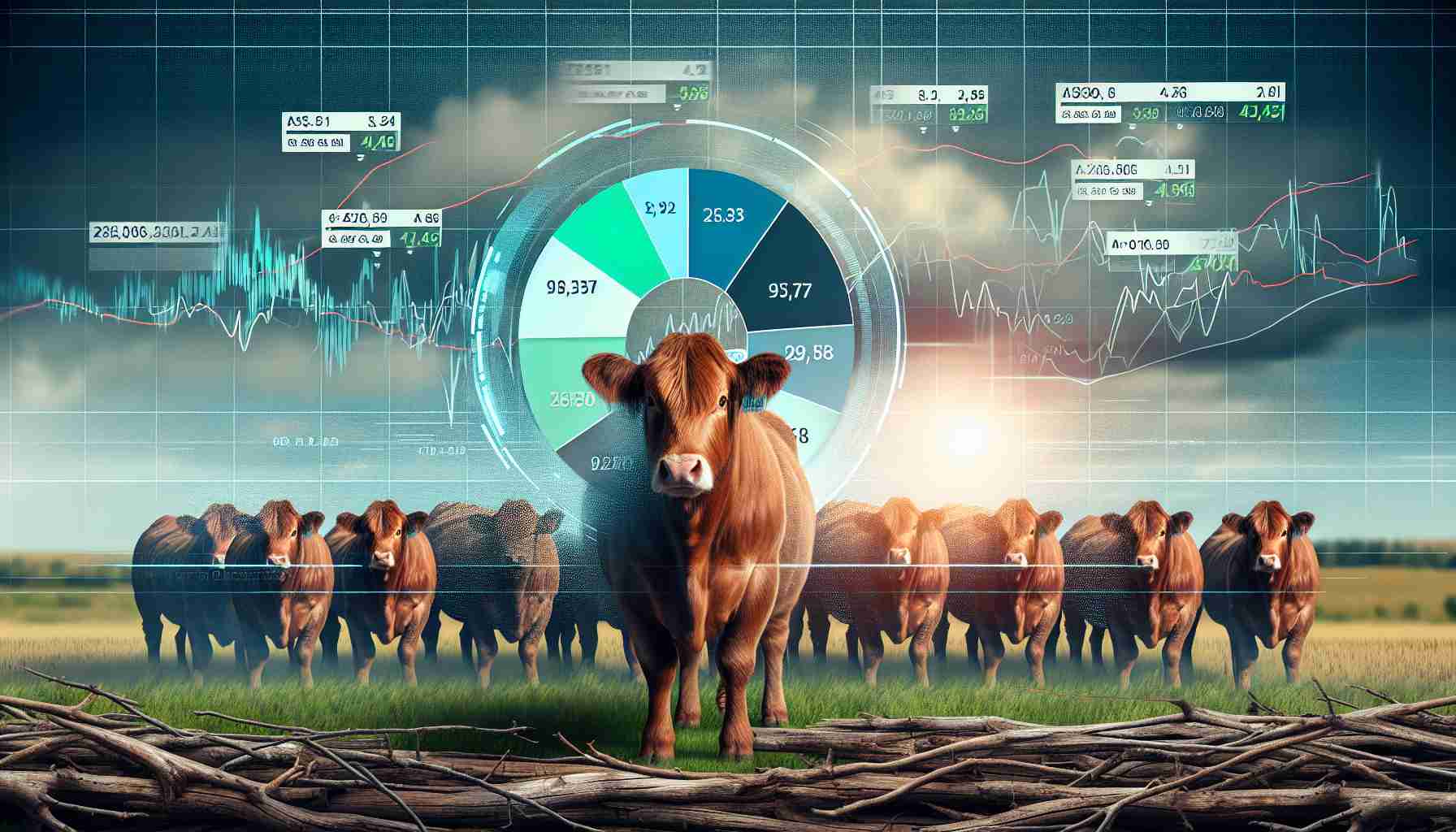The Current State of the Canadian Beef Market
The Canadian beef industry has witnessed robust prices recently, yet looming tariffs from the U.S. create a cloud of uncertainty. As experts analyze the evolving landscape, they highlight both the promising and precarious elements influencing this crucial sector.
Recent reports indicate that during the first two weeks of January 2024, the beef market opened strongly, bolstered by record prices. Industry experts, like Rick Wright from the Livestock Markets Association, emphasized the remarkable value of various cattle classes, with feeder steers showing impressive pricing trends: from $300 to over $450 per hundredweight.
Meanwhile, heifer prices reflected a mixed bag of values, slightly lower for the heavier weights but stronger for lighter heifers. Specific figures confirmed that smaller heifers have gained traction in the market, showcasing a shift in demand.
The fluctuations in slaughter cattle prices also demand attention, as factors such as a beef shortage in North America and favorable exchange rates continue to drive market dynamics. However, the anticipated tariffs from incoming U.S. policies pose a significant threat, especially since Canada relies heavily on the U.S. as its largest beef market.
Despite these challenges, Wright advocates for producers to seize opportunities by enhancing their production strategies. With the potential for beef to become a luxury item amid rising prices, the industry may need to pivot to adapt to changing consumer behaviors, even as it maintains its commitment to offering high-quality Canadian beef.
Global Implications of the Canadian Beef Market
The Canadian beef market’s recent fluctuations hold broader implications for society, culture, and the global economy. As the beef industry grapples with potential U.S. tariffs, domestic producers face pressures that could redefine their operational landscape while influencing buying habits across North America. Should Canada implement protective measures in response, it could disrupt trade flows, leading to higher prices for consumers in both countries and a potential shift towards alternative protein sources.
Culturally, the consumption of beef is deeply woven into Canadian society, representing not just sustenance but also heritage and communal identity. Increased prices could compel consumers to reconsider their dietary preferences, fostering a rise in vegetarianism or plant-based diets, which are already trending among health-conscious demographics.
Environmental impacts must also be considered, as the beef industry is a significant contributor to greenhouse gas emissions. As awareness grows regarding the environmental footprint of meat production, future trends may see a push towards more sustainable practices, such as regenerative agriculture or lab-grown alternatives. These innovations could not only mitigate ecological concerns but also shape market viability in the long term.
In light of these dynamics, adapting to a changing economic and cultural landscape will be crucial for the survival and growth of the Canadian beef industry, highlighting the need for resilience and foresight in a rapidly evolving global market.
Beefing Up: Navigating the Landscape of Canada’s Beef Market in 2024
The Current State of the Canadian Beef Market
The Canadian beef industry is currently experiencing a thrilling yet challenging phase marked by unprecedented prices and incoming legislative shifts. As January 2024 unfolds, there are fascinating trends and insights that could significantly influence the market dynamics of this vital sector.
Key Trends in Pricing
Recent data showcases an impressive start to the year for Canadian beef prices. For instance, feeder steers are reportedly selling for between $300 and $450 per hundredweight, an indication of strong demand and limited supply. This pricing trend underscores the resilience of the cattle industry amidst various market pressures. Conversely, the price variations in heifers reveal a dual-faced narrative; while heavier weights have seen a decrease, lighter heifers are gaining momentum—suggesting a noteworthy shift in consumer preferences.
Market Dynamics Influenced by Slaughter Prices
Slaughter cattle prices remain a crucial factor in assessing the health of the beef market. Current reports indicate that these prices may fluctuate due to several influencing factors including a beef shortage across North America and favorable exchange rates. These elements are essential as they can dictate the overall profitability of beef producers in Canada.
U.S. Tariffs: A Looming Threat
Perhaps the most pressing concern for Canadian beef producers is the potential implementation of tariffs by the United States. Given that the U.S. is Canada’s largest beef export market, any new tariffs could significantly disrupt trade and pricing strategies, prompting producers to rethink their approaches to production and marketing.
Strategic Adaptations for Producers
In light of these challenges, industry experts, such as Rick Wright from the Livestock Markets Association, encourage beef producers to adapt their strategies. This might include enhancing production techniques to ensure that Canadian beef remains competitive, especially as escalating prices could position beef as a luxury item for consumers.
Predictions for the Future
Looking ahead, experts predict that the beef market may continue to evolve, particularly with the potential impact of changing consumer behaviors. As sustainability and ethical sourcing gain traction among consumers, Canadian producers will need to align their practices with these emerging preferences to maintain market relevance.
Pros and Cons of Current Market Conditions
– Pros:
– Record-high prices for feeder steers indicate strong market demand.
– Shifts in heifer pricing may open new opportunities.
– Potential for enhanced production techniques.
– Cons:
– Uncertainty due to incoming tariffs from the United States.
– Risk of beef becoming a luxury item, potentially affecting demand.
– Fluctuating slaughter prices could impact profitability.
Conclusion
As the Canadian beef market continues into 2024, producers must navigate a landscape filled with opportunities and challenges. Embracing innovation and adapting to market conditions will be essential for sustaining growth in this critical sector.
For more information on the dynamics of the beef market, you can visit the Canadian Cattlemen’s Association.
